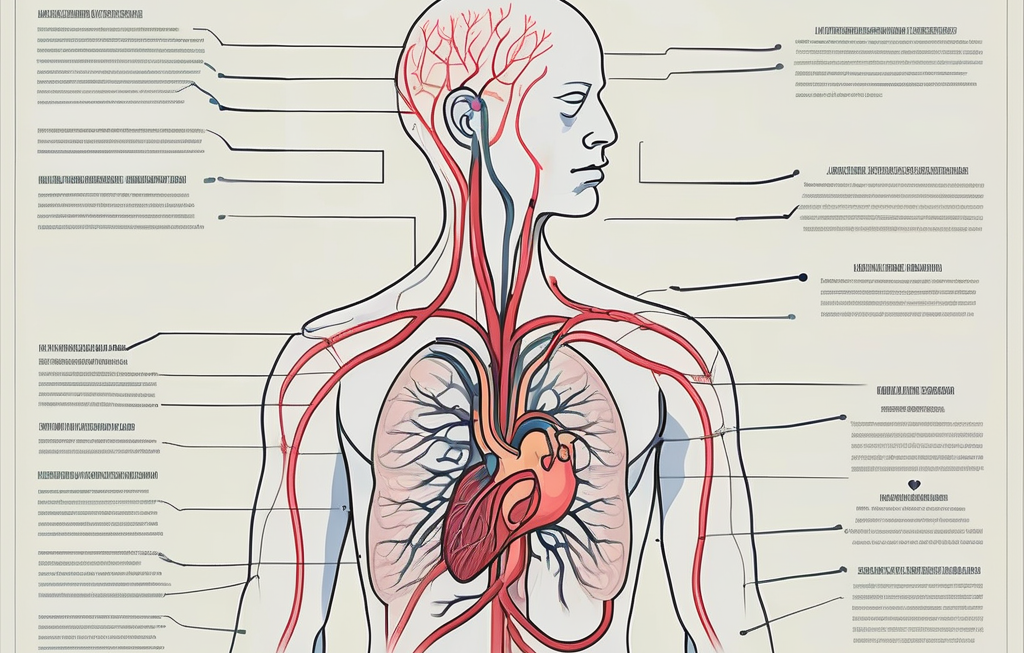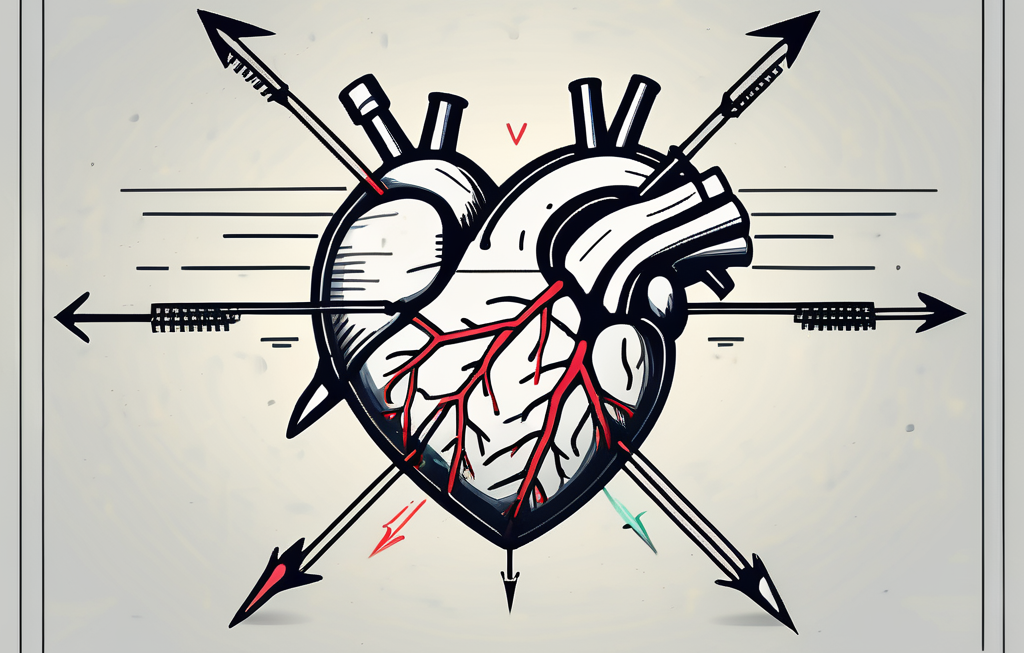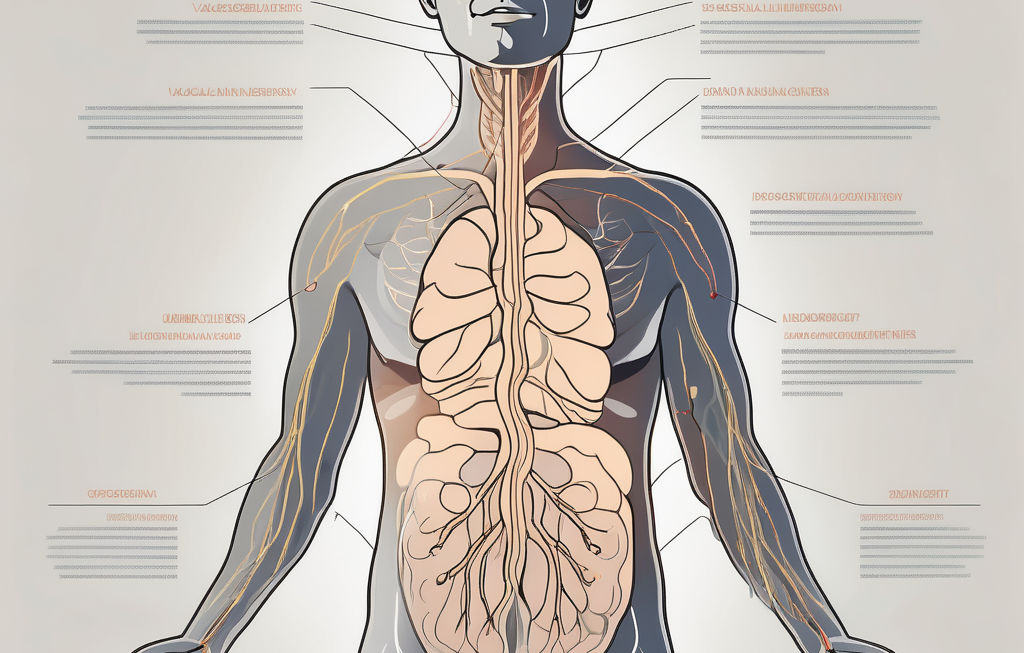Vagal vasovagal attacks, also known as vasovagal syncope, are episodes of fainting or blackout that occur due to a sudden drop in blood pressure. These episodes are often triggered by certain stimuli, such as seeing blood, experiencing pain, standing for long periods, or feeling emotionally distressed. Understanding the vagal nerve and the complex mechanisms behind vasovagal attacks can shed light on this condition and help individuals manage their symptoms effectively.
Understanding the Vagal Nerve
The vagal nerve, also known as the vagus nerve, is one of the cranial nerves responsible for regulating various bodily functions. It plays a crucial role in maintaining the balance between the sympathetic and parasympathetic nervous systems. The vagal nerve extends from the brainstem to the abdomen, supplying signals to control heart rate, blood pressure, digestion, and other vital processes.
Interestingly, the vagal nerve is the longest cranial nerve in the body, with a complex network of fibers that branch out to reach different organs and tissues. This extensive reach allows the vagal nerve to influence a wide range of physiological functions, making it a key player in the body’s overall homeostasis.
The Role of the Vagal Nerve in the Body
The vagal nerve acts as a communication highway between the brain and different organs, ensuring their proper functioning. It helps regulate heart rate, promoting a steady rhythm and preventing palpitations or arrhythmias. The vagal nerve also influences blood vessel dilation and constriction, which affects blood pressure levels.
In addition to its role in cardiovascular function, the vagal nerve is also involved in the regulation of digestion. It enhances gastrointestinal motility and secretion, aiding in the digestion and absorption of nutrients. Furthermore, the vagal nerve plays a role in the brain-gut axis, influencing emotional and cognitive processes related to gut health.
The Connection Between the Vagal Nerve and Vasovagal Attacks
In the case of vasovagal attacks, the vagal nerve plays a key role in triggering and modulating the body’s response to different stimuli. When certain triggers, such as pain or emotional distress, activate the vagal nerve, it can lead to an overstimulation of the parasympathetic nervous system and a subsequent drop in blood pressure and heart rate.
This sudden drop in blood pressure reduces the blood flow to the brain, resulting in symptoms like dizziness, lightheadedness, and fainting. This reaction is the body’s way of protecting itself from potential harm or danger.
It is important to note that while vasovagal attacks can be alarming, they are usually not life-threatening. Understanding the role of the vagal nerve in these episodes can help individuals recognize triggers and take steps to prevent or manage them effectively.
The Science Behind Vasovagal Attacks
Understanding the underlying science behind vasovagal attacks is crucial for individuals affected by this condition. By recognizing the triggering factors and the physiological processes involved, individuals can better manage their symptoms and seek appropriate medical advice when needed.
The Triggering Factors of Vasovagal Attacks
Vasovagal attacks can be triggered by various factors, and they vary from person to person. Some common triggers include a fear of needles or medical procedures, witnessing blood or injury, prolonged standing, extreme emotional distress, or even the sight of certain objects or smells.
For example, the fear of needles or medical procedures, known as trypanophobia, can induce a vasovagal response in susceptible individuals. The mere thought of an injection or the sight of a needle can activate the body’s stress response, leading to a cascade of physiological changes.
Similarly, witnessing blood or injury can trigger a vasovagal attack in some individuals. The sight of blood, especially in large amounts, can evoke a strong emotional response and activate the body’s fight-or-flight mechanism. This, in turn, can lead to a vasovagal response and subsequent fainting.
Identifying personal triggers is essential for individuals with vasovagal attacks. By avoiding or managing these triggers, individuals can reduce the frequency and severity of their episodes. It is important to note that triggers can vary greatly from person to person, and what may cause a vasovagal attack in one individual may not affect another.
The Physiological Process of a Vasovagal Attack
During a vasovagal attack, the body undergoes a series of physiological changes that lead to fainting or blackout. When a trigger activates the vagal nerve, it sends signals to slow the heart rate and dilate blood vessels, resulting in a sudden drop in blood pressure. This decrease in blood flow to the brain leads to the characteristic symptoms of a vasovagal attack.
However, the physiological process of a vasovagal attack extends beyond the drop in blood pressure. In addition to the decrease in blood pressure, individuals may experience a decrease in oxygen levels in the brain and a decrease in cerebral blood flow. These factors contribute to the temporary loss of consciousness and subsequent recovery phase.
Furthermore, during a vasovagal attack, the body may also release stress hormones, such as adrenaline, which can further exacerbate the symptoms. These hormones can increase heart rate and cause vasoconstriction, further reducing blood flow to the brain.
Understanding the intricate physiological processes involved in vasovagal attacks can help individuals affected by this condition gain a sense of control and seek appropriate medical interventions. By working closely with healthcare professionals, individuals can develop personalized strategies to manage their symptoms and improve their quality of life.
Symptoms of a Vasovagal Attack
Recognizing the symptoms of a vasovagal attack is crucial for individuals affected by this condition. Knowing what to expect during an episode can help individuals effectively manage their symptoms and seek appropriate medical attention when necessary.
When experiencing a vasovagal attack, the body undergoes a series of complex physiological responses that can manifest in various ways. Understanding these symptoms can empower individuals to navigate through an episode with greater awareness and control.
Physical Symptoms of a Vasovagal Attack
During a vasovagal attack, individuals may experience a range of physical symptoms. These can include dizziness or lightheadedness, blurred vision, tunnel vision, nausea, sweating, and a pale complexion. Some individuals may also feel a sudden and intense urge to lie down or sit to prevent fainting.
It’s important to note that each individual may experience a unique combination of symptoms, and the intensity can vary from mild to severe.
Furthermore, some individuals may also notice changes in their heart rate and blood pressure during a vasovagal attack. These physiological changes can contribute to the overall feeling of discomfort and unease experienced during an episode.
Emotional and Psychological Symptoms
In addition to physical symptoms, vasovagal attacks can also cause emotional and psychological distress. Individuals may feel anxious, scared, or overwhelmed leading up to or during an episode. The fear of losing control or injuring oneself can further exacerbate these emotional responses.
Understanding the emotional and psychological impact of vasovagal attacks is essential for individuals to develop coping strategies and seek necessary support.
Moreover, the psychological aspect of these attacks can sometimes linger beyond the physical symptoms, leading to feelings of vulnerability or apprehension in certain situations. Addressing these emotional repercussions is a vital component of holistic management and care for individuals affected by vasovagal episodes.
Diagnosis of Vasovagal Attacks
Diagnosing vasovagal attacks involves a comprehensive evaluation of an individual’s medical history, physical examination, and sometimes diagnostic tests. Proper diagnosis is crucial to rule out other potential causes of fainting and to guide appropriate treatment and management strategies.
Understanding the intricacies of diagnosing vasovagal attacks is essential for healthcare professionals. It requires a meticulous approach that delves into various aspects of the patient’s health and well-being.
Medical History and Physical Examination
During the diagnostic process, healthcare professionals will conduct a detailed medical history review to understand the frequency, duration, and triggers of vasovagal attacks. They will also perform a physical examination to assess overall health and evaluate any underlying conditions or risk factors.
Medical history plays a significant role in uncovering clues that may point towards a vasovagal etiology. Patients are encouraged to provide detailed information about their symptoms, previous episodes, and any relevant medical conditions.
Diagnostic Tests for Vasovagal Attacks
In some cases, healthcare professionals may recommend additional diagnostic tests to confirm the diagnosis of vasovagal attacks and rule out other potential causes. These tests can include an electrocardiogram (ECG) to assess heart function, a tilt-table test to provoke a controlled vasovagal response, or blood tests to evaluate electrolyte imbalances.
Diagnostic tests are instrumental in painting a comprehensive picture of the patient’s health status. They provide valuable insights that aid in accurate diagnosis and appropriate treatment planning.
It’s important to follow medical advice and complete any recommended tests to ensure an accurate diagnosis.
Treatment and Management of Vasovagal Attacks
While there is no cure for vasovagal attacks, effective management strategies can help individuals reduce the frequency and severity of their symptoms. A multimodal approach that combines lifestyle changes, self-care techniques, and sometimes medical interventions can significantly improve the quality of life for individuals affected by this condition.
Lifestyle Changes to Manage Vasovagal Attacks
Making certain lifestyle changes can play a crucial role in managing vasovagal attacks. Staying properly hydrated, avoiding triggers, maintaining a healthy diet, and adopting stress management techniques can all contribute to reducing the frequency of episodes.
For instance, staying hydrated is important because dehydration can exacerbate symptoms of vasovagal attacks. By drinking an adequate amount of water throughout the day, individuals can help maintain their blood volume and prevent sudden drops in blood pressure.
In addition to hydration, avoiding triggers is another key aspect of managing vasovagal attacks. Common triggers include prolonged standing, hot environments, and emotional stress. By identifying and avoiding these triggers, individuals can minimize the likelihood of experiencing an episode.
Furthermore, adopting stress management techniques can be beneficial in reducing the frequency and severity of vasovagal attacks. Practices such as deep breathing exercises, meditation, and yoga can help individuals relax and maintain a balanced nervous system, which can help prevent the onset of an attack.
Additionally, individuals should prioritize getting enough sleep, exercising regularly, and avoiding excessive alcohol or drug use. These lifestyle modifications can help improve overall cardiovascular health and reduce the risk of triggering a vasovagal attack.
Medical Treatments for Vasovagal Attacks
In some cases, healthcare professionals may recommend medical interventions to help manage vasovagal attacks. These can include prescription medications to regulate blood pressure or heart rate, the use of compression stockings to prevent blood pooling in the legs, or implantation of a pacemaker to regulate heart rhythm.
Prescription medications such as beta-blockers or selective serotonin reuptake inhibitors (SSRIs) may be prescribed to individuals with frequent or severe vasovagal attacks. These medications can help regulate blood pressure and heart rate, reducing the likelihood of an episode.
Furthermore, the use of compression stockings can be an effective non-pharmacological intervention for managing vasovagal attacks. These stockings apply pressure to the legs, helping to prevent blood from pooling in the lower extremities and reducing the risk of blood pressure drops.
In rare cases, when other treatments have not been successful, healthcare professionals may recommend the implantation of a pacemaker. A pacemaker is a small device that is surgically placed under the skin and helps regulate the heart’s electrical activity, ensuring a steady heart rhythm and reducing the occurrence of vasovagal attacks.
The decision to pursue medical treatments should be made in consultation with a healthcare professional based on an individual’s specific needs and overall health. It is important to discuss the potential risks and benefits of each treatment option to make an informed decision.
Living with Vasovagal Attacks
Vasovagal attacks can significantly impact an individual’s daily life, causing anxiety and limitations. However, with proper understanding and management strategies, individuals can lead fulfilling and active lives, minimizing the impact of this condition.
Understanding the triggers of vasovagal attacks is crucial in managing this condition. Common triggers include prolonged standing, sudden exposure to stressful situations, dehydration, and extreme heat. By identifying and avoiding these triggers, individuals can reduce the frequency of episodes and improve their quality of life.
Coping Strategies for Vasovagal Attacks
Developing effective coping strategies is key to managing vasovagal attacks and reducing their impact on daily life. Deep breathing exercises, progressive muscle relaxation, and mindfulness techniques can help individuals regain control during an episode and prevent fainting.
It’s also beneficial for individuals to carry a small snack or sugary drink to quickly raise their blood sugar levels in case they feel an episode coming on. This can help prevent fainting and alleviate symptoms associated with vasovagal attacks.
Additionally, exploring stress management techniques and seeking emotional support from loved ones or support groups can provide valuable resources for coping with the emotional aspects of this condition.
Long-Term Prognosis for Individuals with Vasovagal Attacks
The long-term prognosis for individuals with vasovagal attacks is generally positive, as this condition is not life-threatening in most cases. By following recommended management strategies and making necessary lifestyle changes, individuals can effectively control the frequency and severity of their symptoms.
It’s important for individuals with vasovagal attacks to maintain regular check-ups with their healthcare provider and seek prompt medical attention for any changes in symptoms or concerns.
Engaging in regular physical activity and maintaining a healthy diet can also contribute to overall well-being and help manage vasovagal attacks. By staying hydrated, getting an adequate amount of sleep, and avoiding triggers, individuals can take proactive steps towards living a full and active life despite this condition.
Conclusion
Vagal vasovagal attacks can be distressing and disruptive, but with understanding and proper management, individuals can regain control over their lives. Recognizing the role of the vagal nerve and its connection to vasovagal attacks, understanding the triggering factors and physiological processes involved, and implementing appropriate treatment and coping strategies are all crucial steps towards effectively managing this condition.
Remember, if you or someone you know experiences episodes of fainting or blackout, it’s important to seek medical evaluation and guidance. A healthcare professional can provide an accurate diagnosis, offer tailored recommendations, and ensure the well-being of those affected by vasovagal attacks.



